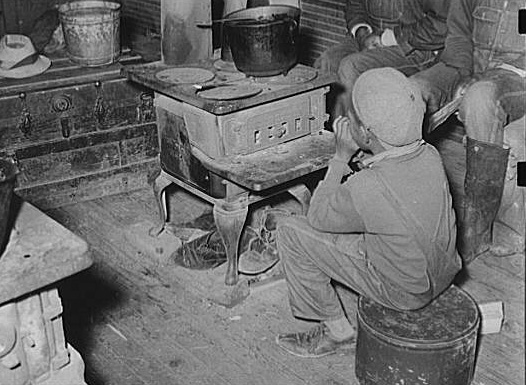Here is the original Installation and Operating Instructions and Parts List for The H.B. Smith Company's Oil Fired Cast Iron Hot Water Boilers (No. OHB-13W). This is esti...
Coal-Fired Heating

In the days before central heating life was hard. So hard, in fact, that it’s almost impossible for us to comprehend the difference that central heating made to people’s lives. In so many ways central heating has made life easier, cleaner, and less polluted. It’s hard to imagine a time when life was dominated by a fireplace in the home’s lounge room. So what was life like before the invention of central heating, when people relied on coal-fired stoves and fireplaces to get through the winter?
Beyond the Hypocaust
In fact the Roman hypocaust model was in continued use for many years after the fall of Rome. Underfloor heating pipes have been found in ancient Middle East buildings. In around 1700, Russian engineers designed hydrological systems to heat homes, which can still be seen in Peter the Great’s Summer Palace in St Petersburg. It wasn’t until 1716 that water was first used to move heat around the home and it was in Sweden that the technology was developed. It was still the preserve of the rich however. Some of the earliest steam-heating was fitted into the home of John Horley Palmer, the Governor of the Bank of England. This was not to keep him warm, but more so that he could grow grapes. Ordinary working people had a much harder time of it.
Open Fires
Open fires today are, for most, a luxury. In the 19th Century they were a necessity. Huge quantities of coal were needed to keep homes warm. It all had to be mined, stored, distributed, stored again in homes, and eventually hauled inside the home for heating. Coal, as we all know, is dirty, smelly and polluting. Coal fires in London and US Cities caused dense ‘smog’ which sat like a dark fog and made the atmosphere heavy and dangerous to breathe. Interestingly, there is the same problem now in cities like Delhi, where the smog from old style pollution-generating systems is still in place. It is an indication of how far the West has come in term of development since the coal fuel smog problem, and how much help developing countries still need to help with their own technology.
Poor families in the 19th Century kept the home warm with the kitchen range. The kitchen was the warmest place in the house, so it made sense for baths to be taken in front of the range. Water was laboriously heated on the range and transferred into a tin bath, and was not discarded until all the family had used it. Coal was too expensive to waste. Other ways that the range made life more comfortable was heating of water to fill footwarmers. Hot water bottles were made from stone, or, if the family were richer, copper. Most rooms would have had a fireplace and the trend was to make them as decorative as possible. Some beautiful examples of cast iron fireplaces can be found in the US and the UK still. The addition of coloured and decorated tiles took competitive fireplace decoration to new levels. Since fireplaces were the only form of heating, they played a central role in people’s lives. Their maintenance was a daily drudge, with ash to be collected and carpets swept. The dust generated from the ash meant that sweeping was one of the main activities undertaken by housewives and servants at the time of coal fired heating.
Improvements to fireplaces
It was one of the Founding Fathers, Benjamin Franklin, who developed the convection chamber design for fireplaces, which greatly improved their efficiency and heat output. He also introduced the idea of bringing air from the basement of houses and increasing the venting at the top. Over the years, many improvements have been made, and fireplace fitting and efficiency remains something of an art, best left to experts for correct installation.
Health Concerns
There is no doubt that inhalation of both wood- and coal smoke is harmful to health. In the days of smog-filled cities, death rates from lung disease were extremely high. Other complaints included bronchitis, asthma and pulmonary heart disease. With several fires in the average home, it is not surprising that health improvements are one of the major contributions that modern central heating has made to life today. This, along with the time-saving element and the domestic drudgery reduction, makes central heating a much-loved aspect of modern life. It’s worth remembering what our ancestors had to go through the next time you flip the switch on your boiler.
Leave a comment
Related Posts
The Henry Ford Museum in Dearborn, MI has an interesting hot-water heating system. Take a look at the radiators below. They are from the Shaw-Perkins Manufacturing Compan...
We estimate that this cast-iron boiler catalog from The Peerless Heater Company in Boyertown, PA is from the 1980s or 1990s.